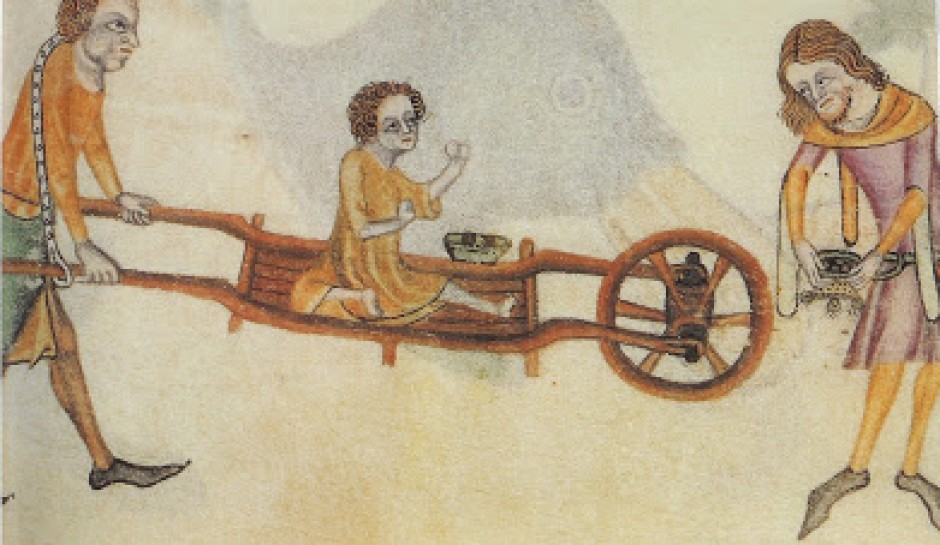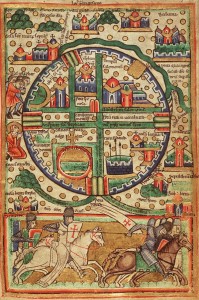November 14, 5 pm, 715 Hesburgh Library
(Note: Back to original time!)
Theme:
Landscape Studies
Speakers:
Amy Mulligan (University of Notre Dame, Irish Studies): “Sanctifying Landscape –Naturalizing Patrick and Pilgrimage in Acallam na Senórach“
In the late-12th or early 13th c. Irish prosimetric text, Acallam na Senórach (“Colloquy of the Ancients”) St. Patrick meets a pagan warrior, Cáilte, and the two unlikely companions journey together through Ireland, Cáilte regaling Patrick with stories prompted by the sites they visit and his emotional reactions to the wondrous events which took place there. Patrick, at the behest of two angels, has his scribe write these accounts down to preserve them for the enlightenment and ‘entertainment of lords and commons of later times.’ The Acallam models a productive relationship between the Irish Church and native tradition-bearers, and also serves as a complex meditation on the movement between oral and written literary modes. Building on those key elements, this paper will explore how Ireland, Patrick, and story-telling itself, are depicted and framed as environmental or landscape-based phenomena. I argue that a main goal of the Acallam is to ‘naturalize’ St. Patrick, in all senses of the word. A British-born foreigner, by the end of the text, Patrick is recognized as Ireland’s patron saint. Patrick is further ‘naturalized’ by rooting himself into the Irish landscape: as in so many Irish legends of kingship and sovereignty, Patrick and his preeminence are endorsed by the land, and his actions showcase an increasingly harmonious relationship with Ireland’s natural environment. Furthermore, in the Acallam’s rendering of Irish landscape, historical, built structures, including a powerful Norman monastic foundation, are erased from the Irish topography, and the virtual pilgrimage that the audience and readership of the Acallam undertake within the pages of the text is one that privileges a natural Ireland, with an emphasis on green, wild and watery spaces. In the Acallam, I argue that we encounter a uniquely Irish version of sacred-secular pilgrimage, one in which for Patrick, Cáilte and the audience, contemplative travel through Ireland’s storied landscape is a sanctifying process.
Cara Aspesi (University of Notre Dame, Theology Department): “Reconstructing Jerusalem by Stations: The Transformative Power of a 12th-Century Crusader Liturgical Procession”
After the armies of the First Crusade captured Jerusalem on July 15th, 1099, an anonymous liturgist composed a new Latin feast for July 15th to commemorate the event. This feast, the Festivitas s. Hierusalem, was celebrated by the canons of the Holy Sepulchre throughout the period of Crusader occupation of Jerusalem. By means of its combination of prayers, homiletic material, and selections from the vast repertory of Latin chant, the feast presented a new vision of Jerusalem’s sacred past and present significance to the Western Christian community which now controlled the city. The Festivitas s. Hierusalem underwent several revisions, each building on the theological themes of its predecessor, to eventually portray the earthy Jerusalem of the Crusaders as both a Western church and the Heavenly City of the Apocalypse. Especially important for this liturgical representation of Jerusalem was the feast’s stational liturgy, a procession with three primary stations carried out throughout the city after the hour of Prime. By employing the strategies of reenactment, renaming, and reinterpretation, the procession laid the foundation for the feast’s overall theological development by transforming Jerusalem’s landscape from a mere earthly city to a space legitimately possessed by and sacred to Western Christians.

